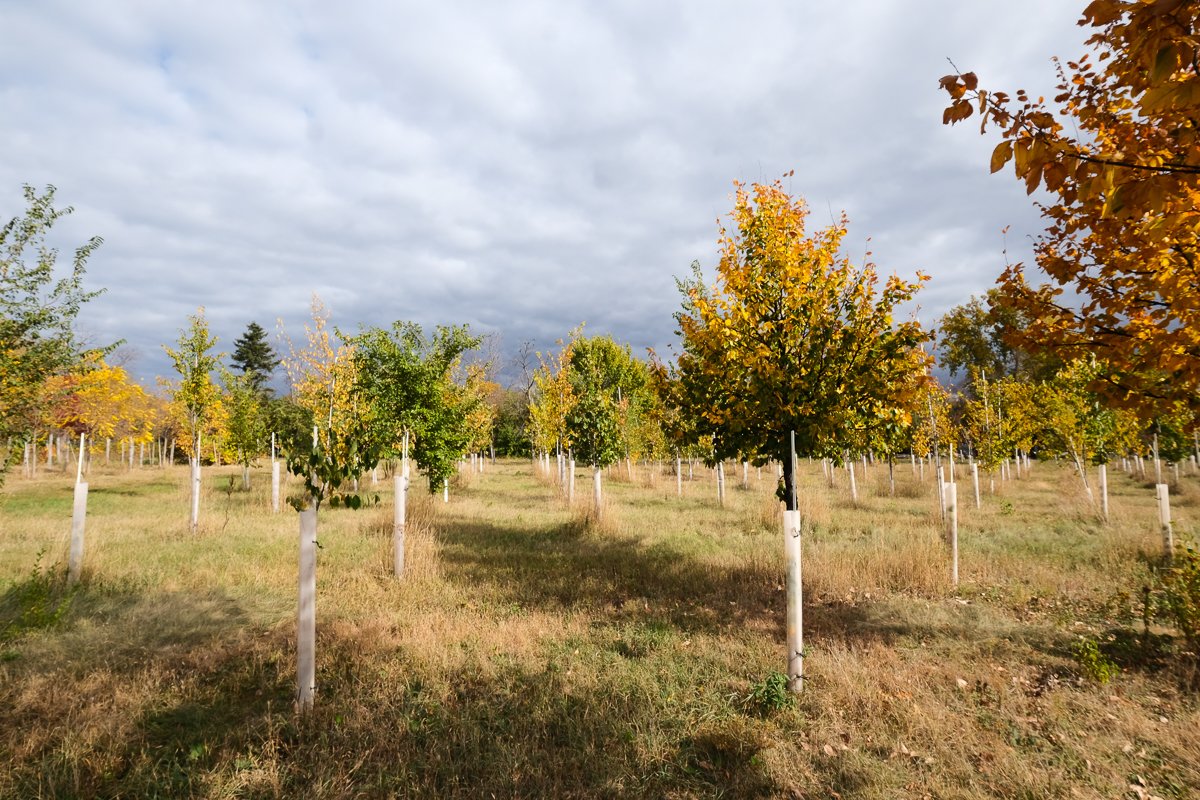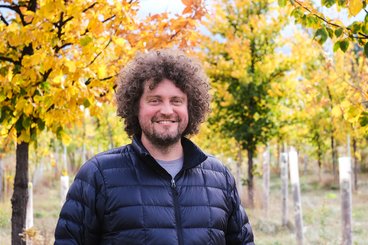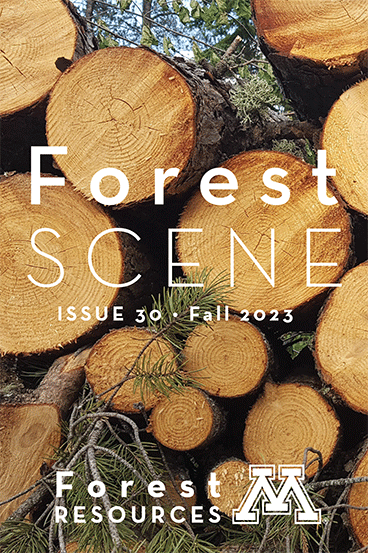
In the late 1970s, there were 1.3 million American elms with diameters greater than 21 inches in Minnesota. Today, due to the devastating effects of Dutch elm disease, 95 percent are gone, leaving behind fewer than 60,000 big elms. These survivor elms are the basis of an ongoing project managed by researchers Ben Held, Department of Plant Pathology, and Ryan Murphy, Department of Forest Resources, as they work to understand why these trees survived and how they can inform future forestry efforts.
The Devastation of an Iconic Tree
“The American elm is an iconic tree that has been a symbol of liberty and freedom,” said Ben Held. “It was prominent on the grounds at the United States Capitol, and when people imagine tree-lined boulevards, they’re often picturing elm trees.”
So beloved was the elm that it comprised 95 percent of the trees planted in boulevards in the Twin Cities by the 1970s when Dutch elm disease arrived. In 1977 alone, the metro area lost more than 190,000 elms, resulting in starkly empty streets.
Despite the elm’s susceptibility to Dutch elm disease, it is a very resilient tree. American elms can withstand drought, salt, and floodplains better than most species, making them an ideal tree to plant in particular climates. Elms also capture runoff, offer food and habitat to insects and other animals, and reduce winter heating and summer cooling costs in urban areas.
Because of numerous ecological benefits of the elm tree, Murphy and Held are interested in reviving the elm population.
Learning from Survivor Elms

Their project, which began in the early 2000s, was one of the first large-scale efforts to work with Minnesota’s survivor elms and follows a four-step process. First, researchers identify large, old surviving elms, often with help from community members and land managers who notify them. Next, they propagate these old elms by grafting cuttings to seedling elms and growing them in a nursery.
Once these cuttings are big enough, the researchers infect the trees with Dutch elm disease fungus and wait to see if they’re actually resistant. The trees that live are eventually planted. The researchers then study these trees to understand what makes them resistant.
“It’s significant that there does appear to be resistance to Dutch elm disease in the native elm population,” said Ryan Murphy. “It’s also promising that there’s been good establishment and survival in our reforestation efforts.”
This project is ongoing—we all know it takes a long time to grow trees—but the researchers have learned that resistant elms are good at walling off the pathogen. These elms can still be infected, but they do a faster job at responding with compounds that will limit the spread of the pathogen.
“This is an important thing for foresters and homeowners to know—one part of the elm can be impacted but the majority of the tree can still be healthy. If you have a resistant tree, you may be able to prune out the disease without cutting down the tree,” said Held.
Held and Murphy are continuing to do multiple rounds of inoculation with previously tested trees to ensure they have an acceptable level of resistance before releasing. They’re also continuing to expand the number of planting sites and reforestation efforts.
~
Partial funding for this research was provided by the Minnesota Invasive Terrestrial Plants and Pests Center (MITPPC), supported by the Minnesota Environment and Natural Resources Trust Fund (ENRTF) as recommended by the Legislative-Citizen Commission on Minnesota Resources (LCCMR) and the Minnesota Turf and Grounds Foundation (MTGF).
Story by Domini Brown. This article was originally published by the Research and Innovation Office and adapted for Forest Scene. Read the original article.

The Forest Scene newsletter is published biannually in the spring and fall, featuring stories and updates from the Department of Forest Resources. Readers can download issue 30 of Forest Scene as an interactive PDF that is fully tagged and compatible with most screen readers, or read the individual stories here in a web-based format:
- Department Message from Kristen Nelson
- New Faculty: Alicia Coleman and Irene De Pellegrin Llorente
- Donor Alum Recognition: Dr. Narinder Dhir
- Highlights from the 2023 SAF National Convention
- Staff Retirement: Colleen O'Connor
- Graduate Research: Boosting Eastern Hemlock
- New Resource: Creating Climate-Ready Woodlands
- Field Session Snapshots
Image 1 description: At left is a photo of an elm tree nursery in fall. To the right of it is the name of the article ("Survivor Elms Key to Revitalizing Minnesota's Elm Population") below the name and date of the publication.
Image 2 description: Young elm trees are planted in rows in a field. It is autumn and their leaves are various shades of green, yellow, orange, and red. Each tree's trunk is wrapped in plastic tubing for support. The sky overhead is cloudy.
Image 3 description: A light-skinned man with a big poof of curly brown hair and a short beard smiles in an elm nursery. It is autumn and the trees are various shades of fall colors. The man wears a thin black puffer coat.
Image 4 description: A close-up photo of stacked timber overlaid with the text "Forest Scene: Issue 30, Fall 2023". The UMN Forest Resources logo is at the bottom. All text is in white and evergreen sprigs provide some green coloring.
